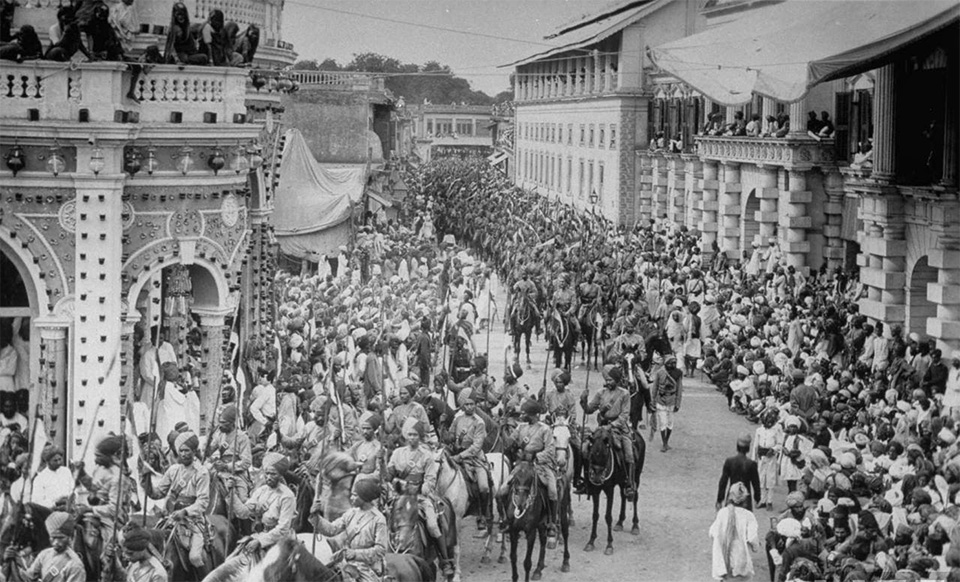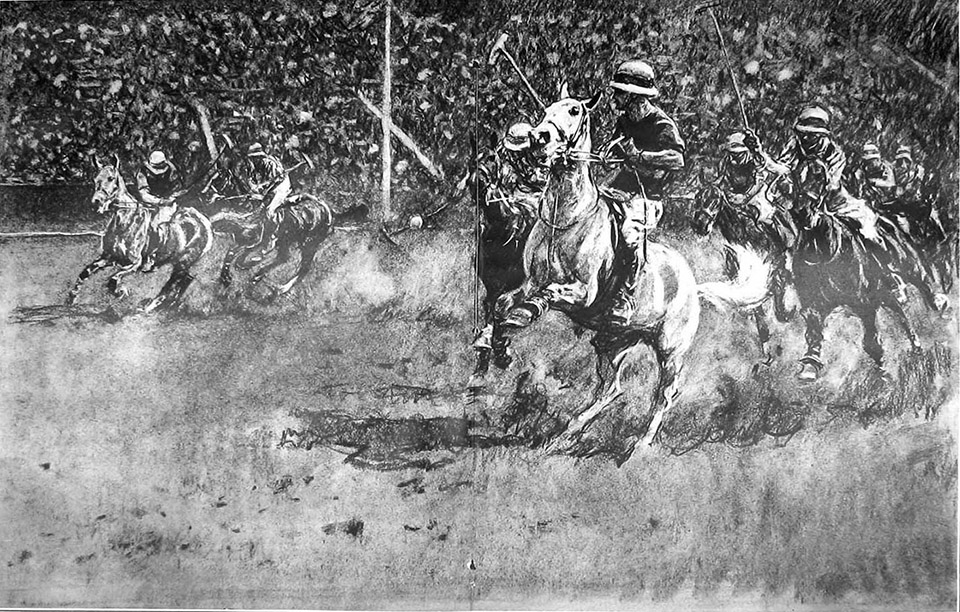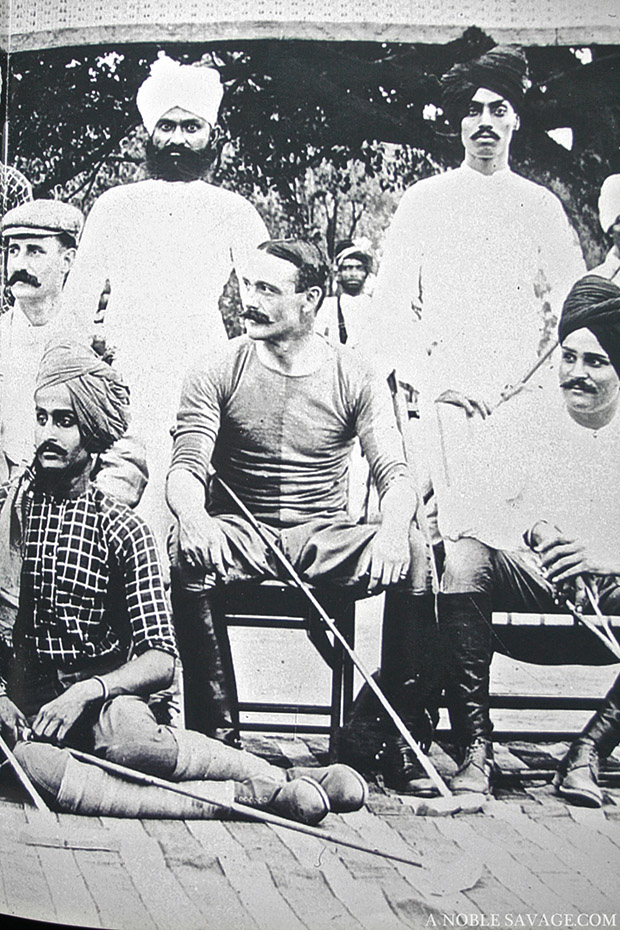THE HOW AND WHEN OF INDIAN POLO
The birth and the living of polo through ages, centuries and borders

Polo is a game played by the Kings. But how all of it starts, is a tale to recite. The world owes the birth of polo to a small tribe in Manipur who played Pulu (ball) as early as 3100 BC! Years later, the sport was discovered by the enterprising British, where after it rapidly spread worldwide to become the most enchanting game mankind could play with his horse. Although today the sport is seen as a symbol of luxury, espoused by the privileged few, it has always been a mystical game personified by that one glorious moment when the rider understands his horse and they become one. LA POLO traces its legacy. From a quiet field in Manipur to pristine grounds nurtured by the leading royal families of India.
FROM PULU TO POLO
The international language of the horse is said to bridge cultures, people and beliefs. And that is what it did in India. Read on to understand the history of this great sport. The father of Modern Polo, India, espoused polo as early as 3100 BC in the villages of Manipur. The tribesmen used to play the game in a rough, colloquial style called Pulu (ball in Manipuri). They played simply for the thrill of it. Till the late 1800s, tea plantation officers, privy to an urbane upbringing, and British officials posted in this enchanting region discovered the sport and felt it must be adapted and structured.
“We must learn the game,” said Lieutenant Joe Sherer mesmerised by the rare art of play. And they did learn the game fast, carrying the game out with them even faster. Before one knew it, the game involving a horse and its rider reached the seven shores. Malta began playing it in 1868; England in 1869; Ireland in 1870; Argentina in 1872; Australia in 1874. In a decade, polo covered half the globe, while the roots remained firmly in India.
THE PRINCES SHOWER INTEREST
With the passage of time, polo spread as an everlasting message, enveloped in a royal shield. In the early 1900s, India was enveloped in Imperial rule. Any gesture of refinement only found its space within the royal courts and art, craft and culture, including sports, grew under the able patronage of the king. Polo was no different. The Indian Maharajas adapted to it like fish does to water. Horses have always been a royal symbol. A king learns to ride his horse just as he is learning to walk. Horses are a player’s counterpart in the sport of polo. With time, they teamed up with their royal riders and lo and behold were born the fabled royal teams of prominence: Alwar, Bhopal, Bikaner, Lucknow, Hyderabad, Jaipur, Jodhpur, Kashmir, Kishangarh, Patiala all joined the game. As did teams like the Central India Horse, the 15th Lancers, Prince Albert Victor's Own Cavalry, the Inniskilling Dragoon Guards, the 10th Royal Hussars and the 17/21st
Lancers. Polo dotted the length and breadth of the Imperial India map. All these imperial teams emerged in a competitive environment in India, the home country of polo. Indian teams, guided by the Maharajas, also sojourned overseas.
WESTWARD BOUND
It was the Jodhpur team that first stepped onto foreign soils. The team won many tournaments in England and paved the way for others to follow. The blue city, Jodhpur still keeps its romance with polo alive and Umaid Bhawan remains the cynosure of many prestigious tournaments. Never to be left behind in tales of refinement, the Gaekwads of Baroda saw Maharaja Sayajirao III adopt the sport; and the prestigious Baroda Cup was born, played with immense pride to date. Jaipur, the natural home to polo, saw many valorous wins led by the late HH Maharaja Sawai Man Singh II, who immortalised the game with his dynamism. The present HH Maharaja Padmanabh Singh of Jaipur simply follows his footsteps, carving a niche for the sport in the city and keeping the legacy alive.

From winters in Delhi, Jaipur and Jodhpur to summers in Kashmir, polo breaks new ground. Polo finds a home in the Kashmir valley as well as under the able leadership of the Royal Kashmir Polo team that remains flamboyant on the grounds. Kashmir and polo became one under the late Maharaja Hari Singh’s leadership, who pursued polo with valour and zest. And who can forget the Nawabs of Pataudi’s love for the sport? Even today, the Bhopal-Pataudi cup is played with great fervour and glamour, personified by the Chote Nawab Saif Ali Khan Pataudi.
Sign up to read the printed edition with this story and more. Now available online.
INDIAN POLO ASSOCIATION
In 1892, the Indian Polo Association (IPA) was formed to administer and proliferate the sport. Led by the 61st Cavalry regiment of India, the last remaining horse-mounted cavalry in the world, IPA is the proverbial umbrella organisation that nurtures polo teams, clubs and cups across India. The most reputed and coveted tournament, the National Open Cup, is organised by IPA and invites participation from a maximum of 20 goal teams.
The association began to host the zonal play-offs for the World Cup in 2001. Headed by the Army Chief as its president, it has provided a platform for rising talents and aspirants of horse riding. Thirty three clubs from all over the country are registered under the IPA and the association strives hard to keep the legacy alive through a series of well-planned tournaments and seasons.
The IPA also hosts the much coveted Rose Bowl Trophy that has produced Arjuna Award winning players. This eminent tournament goes back to 1900 when it was first held in Lucknow. Kolkata remained its stoppage for 17 years till it moved to Delhi. The capital city celebrates the royal saga of championship every year hence. The sport broadened and opened to new riders for achieving new possibilities and it was with a desire to widen the scope of polo that the Federation of International Polo was formed to encourage and assist young players worldwide. It was set up with a view to provide opportunities to players with lower handicap to experience international exposure.

JODHPUR KINGS DAZZLE
Passion, aggression and expression kickstarted a golden era in the blue city.
Circa February, 1922. Over 150,000 people, including 50 Maharajas were cheering from the stands as the Jodhpur team achieved the unachievable triumph of defeating the undefeatable Patiala. Sounds of revelry reverberated in the stands!
It was in 1889 that the seeds of polo were sown in the Rajasthan city of Jodhpur when Sir Pratap Singh, younger brother of the Maharaja of Jodhpur, invited Col Stuart Beatson of the Bengal Lancers to help him raise the Jodhpur Lancers. The British connection with the sport continued when Lord Mountbatten played his first game of polo in Jodhpur when he accompanied Prince Edward on his 1921-1922 tour of India.
In 1897, the Jodhpur team took a trip overseas. Imperial rule was at its helm. The valorous Maharaja Sir Pratap Singh of Jodhpur planned a trip to England. He led his team to a thumping victory on the fields of Hurlingham and Ranelagh and made a grand return home. And Jodhpur became the synonym for polo, paving the way for other imperial teams to follow.
Jodhpur was unstoppable with its winning streak. Right up to the historic fight between Patiala and Jodhpur. Maharaja Sir Pratap was on one side and Maharaja Ranjit Singh on the other, circa February, 1922. Over 150,000 people including 50 Maharajas were cheering from the stands as the Jodhpur team achieved the unachievable triumph of defeating the undefeatable Patiala. Sounds of revelry reverberated in the stands.
However, a massive fury took over the Maharaja of Patiala as he unbridled his horses and ordered to burn the mallets. Patiala never played polo again. This match crowned the team of Jodhpur as the champions of India and Jodhpur became the paramount centre for polo by the turn of the century with six highly maintained polo grounds even rivalling the oldest polo club in the world: Calcutta. The squad of Jodhpur was everywhere. Overwhelmed by the unstoppable team, a nawab from Hyderabad was heard complaining: “Polo players seem to spring up like bloody mushrooms in Jodhpur.”

The Jodhpur Polo Team, 1898.
The Jodhpur team had the most wonderful season in 1925, beating every team that challenged them. Eventually, they secured a place in all the prominent teams of the twenties and thirties.
Sadly it all ended with the outbreak of the Second World War, only to return back to its indigenous roots in 1993, when Maharaja Gaj Singh II re-launched the team and re-established Jodhpur as the prime centre for equestrian and polo. Under his guidance was created a new grass polo ground in the city. Jodhpur has long been regarded as the cradle of polo, and in the spring 2000 the Ambassador of Federation of International Polo Monsieur Patrick Guerrand Hermes teamed up with Prince Shivraj Singh of Jodhpur for the Hermes Cup. Many other famed cups now dot the polo season in Jodhpur, including the British Polo Cup, The Army Commander’s Cup, The Abu Sier Cup and so on.
Polo in Jodhpur saw a tragic setback in 2005 when the handsome Prince Shivraaj Singh of Jodhpur fell during the Birla Cup at Rambagh and suffered serious head injuries. Operated in Mumbai and in coma for two months, he has been battling ever since, recovering slowly to be able to talk short sentences and walk with assistance. His father faced the tragedy with rare fortitude, joining hands with his friend, HH The Maharaja Richard Holkar of Indore, for the Head Injury Foundation that raises funds for timely assistance in such cases.
The glory of polo remains intact in the blue city.
Sign up to read the printed edition with this story and more. Now available online.
JAIPUR POLO
Vivid, versatile and full of valour, polo flourished among the princely states of India, following every haloed pathway.
Polo arrived in the form of a gift to Jaipur. This gift added polo to the long list of achievements of HH Maharaja Sawai Man Singh II of Jaipur. It came as an import from the palace of Umaid Bhawan, Jodhpur, along with Maharaja Umaid Singh’s sister and niece as they got married to the young Maharaja. Sixty of the finest ponies accompanied the brides on their way to Jaipur. Polo was born in the pink city.
A brave king and an able sportsman who knew his horses, Maharaja Sawai Bhawani Singh immortalised the sport. He introduced the World Cup called “The Jaipur World Cup Trophy”, and ever since Jaipur became the natural home to polo.
It has now returned to its past glory with the arrival of the modern prince of polo, Maharaja Sawai Padmanabh Singh of Jaipur. Padmanabh, 21 years, has harnessed the skills, agility and precision of polo, carrying the majestic saga of the sport on his firm shoulders.
The grandson of the late Maharaja Sawai Bhawani Singh, Padmanabh would accompany his grandfather to the Rambagh Polo Grounds as a child. He would witness the legends play on the field and was fascinated by royals like Yuvraaj Vikramaditya Singh of Jammu and Kashmir, Yuvraaj Shivraaj Singh of Jodhpur and his all-time favourite player, Sameer Suhaag. His grandfather dreamed of seeing Padmanabh play on the field too, but alas he was studying in Mayo and then Millfield, as the great Maharaja passed away. An unfulfilled wish however was accomplished by Padmanabh a week after Bhawani Singhji’s passing away when he got on the horse, swung the mallet and competed at age 15, his first game in England.

